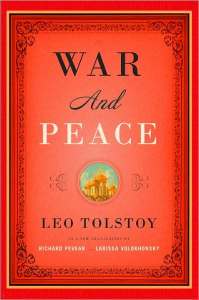
When I settled in New York City at the age of 22, my collegiate allegiance to the Post-Mod grotesquerie of Kafka, Beckett, Gass, and Holwerda began to fade as I encountered Gide, Colette, Renard, Babel—writers whose purged prose adorned reality with lyric grace. I was under the influence of that quartet when I went from my room on the Lower East Side to a nearby Russian bookshop and saw a volume signed by a writer absent from four years of college literature: “L. Tolstoi.” Probably the initial L for a first name, and the vowels caused me to pick it up. I remember it as The Cossacks in a pedestrian Soviet translation; the next was Father Sergius, and within a year I was immersed in War and Peace. No novel quite connected in the way it did. I learned that cultural and historic and spiritual matters could enhance a narrative; that related families in a narrative could, when presented in generational scenes, impart resonant chords similar to music overheard; but the most significant element was that a narrative, even one so huge, could seem cinematic. I understood that Rosemary Edmonds, one of the many translators of Tolstoy into English, had worked from the original, but even second-hand I watched scenes of the major characters unfold as if sitting at a movie. Perhaps the slowed-down, sometimes static philosophic and historical disquisitions that the author occasionally indulged in heightened this cinematic sense. But I was encountering a quality in prose I had never experienced in my life.

